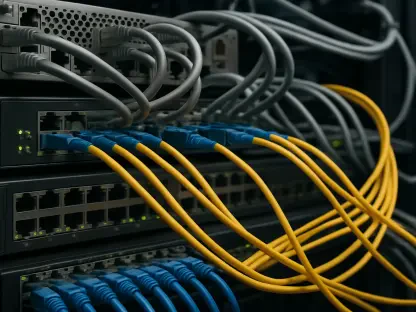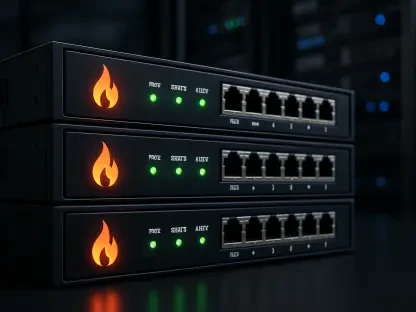I’m thrilled to sit down with Matilda Bailey, a renowned networking specialist whose expertise in cellular, wireless, and next-gen solutions has made her a leading voice in the industry. With a deep understanding of how technologies like AI are transforming network infrastructure, Matilda is the perfect person to guide us through the latest advancements and trends shaping the future of enterprise and hyperscaler environments. In this interview, we’ll explore how companies are positioning themselves in the AI era, the innovative hardware and software solutions driving this change, the importance of security in AI deployments, and the broader impact on enterprise modernization.
How do you see major players in the networking industry carving out their space in the AI era, particularly in balancing the needs of enterprise and hyperscaler environments?
The AI era is a game-changer for networking, and major players are focusing on becoming the backbone of this transformation. They aim to provide the essential infrastructure—think of it as the foundation for AI-driven innovation—that supports both enterprises looking to modernize and hyperscalers handling massive data loads. The key is offering scalable, flexible solutions that can handle the intense demands of AI workloads while ensuring reliability across diverse environments. It’s about being a trusted enabler, ensuring that whether a company is dipping its toes into AI or diving in headfirst, the network can support it seamlessly.
What do you think sets apart the approach of leading networking companies when it comes to building AI infrastructure?
What stands out is the emphasis on being agnostic to specific AI applications or platforms. Instead of tying themselves to one type of AI solution, top companies are focusing on creating versatile infrastructure that can adapt to various use cases. This approach often involves a mix of cutting-edge hardware, like high-capacity switches and routers, and intelligent software for management. It’s unique because it prioritizes interoperability and future-proofing, ensuring that businesses aren’t locked into a single ecosystem and can evolve as AI technology advances.
Can you elaborate on the analogy of providing the ‘picks and shovels’ for AI infrastructure, and why this role is so critical?
Absolutely. The ‘picks and shovels’ analogy refers to being the provider of fundamental tools that others use to build and innovate. In the context of AI, it means supplying the core networking hardware and software—like switches, routers, and management platforms—that power AI applications. This role is critical because no matter how advanced AI models or apps become, they rely on robust, high-speed, and secure networks to function. By focusing on these foundational elements, companies ensure they’re indispensable to the AI revolution, supporting everything from data transfer to workload processing without dictating how the end solution looks.
What are some of the standout features in the latest networking hardware designed specifically for AI workloads?
The newest hardware, like advanced smart switches, is built to handle the enormous data throughput that AI demands. Features include high-capacity chips that can process multiple tasks in parallel without bottlenecks, ensuring smooth operation for things like generative AI or automation. Additionally, many of these devices incorporate advanced security measures, such as encryption techniques to protect data even in complex, AI-driven setups. They’re also designed with flexibility in mind, allowing for integration into various network architectures, which is crucial for supporting diverse AI applications.
How do these modern networking solutions manage the massive data requirements of AI traffic compared to older technologies?
Older networking gear often struggled with the sheer volume and speed of data that AI traffic generates, leading to latency or capacity issues. Modern solutions, however, are engineered with significantly higher bandwidth and processing power. They use specialized chips that can handle parallel operations, meaning they can manage multiple data streams at once without slowing down. This is a huge leap forward, as it ensures that AI systems, which rely on real-time data processing, aren’t held back by network limitations, offering a much smoother and more efficient experience.
Why is integrating advanced security features, like post-quantum cryptography, into new networking hardware so important for AI environments?
AI environments process and transmit incredibly sensitive data, often in real-time across complex networks, making security paramount. Post-quantum cryptography is a forward-thinking approach to protect against future threats, especially as quantum computing could potentially break traditional encryption. By embedding these advanced security protocols into hardware, companies ensure that data remains confidential and secure, even as networks scale and AI topologies become more intricate. It’s about safeguarding trust in AI systems, which is essential for widespread adoption.
How do specialized components, like data processing units, enhance the performance of networking gear for AI tasks?
Data processing units, or DPUs, are like a dedicated helper within networking hardware. They offload complex data processing tasks from the main system, freeing up resources for core networking functions. In the context of AI, this means the hardware can handle large-scale workloads more efficiently, whether it’s training models or running real-time applications. DPUs essentially boost the gear’s capacity to manage intensive tasks without compromising speed or reliability, making them a critical piece for AI-driven networks.
Can you explain how preconfigured AI infrastructure packages help businesses integrate AI into their operations?
These preconfigured packages, often referred to as AI PODs, are essentially ready-to-go solutions that simplify the adoption of AI. They come with validated hardware and software setups, including AI models and development tools, that businesses can plug into their data centers or edge environments. This takes away the guesswork and complexity of building an AI infrastructure from scratch. They’re particularly helpful for companies that may not have the in-house expertise or resources to design custom solutions, allowing them to start experimenting with AI quickly and scale as needed.
How are security challenges for AI models and applications being addressed through collaborative technology solutions?
Security in AI is a massive concern, especially with risks like model tampering or data breaches during development and deployment. Collaborative solutions bring together networking expertise, specialized hardware, and security software to create a fortified environment. For instance, integrating advanced threat detection and defense mechanisms helps protect AI models from attacks. These solutions often use a layered approach, combining network-level security with application-specific safeguards, ensuring that every stage of an AI project—from creation to deployment—is protected against evolving threats.
What advice do you have for our readers who are looking to navigate the intersection of networking and AI in their businesses?
My advice is to start small but think big. Begin by modernizing your network infrastructure to handle future demands, even if you’re not ready to fully dive into AI yet—focus on scalability and security from the get-go. Partner with providers who offer flexible, interoperable solutions so you’re not locked into one path. And don’t be afraid to experiment; use prebuilt AI packages or cloud-based options to test use cases without massive upfront investments. Lastly, keep an eye on industry trends and collaborations, as the field is evolving rapidly, and staying informed will help you make smarter decisions for your business.









